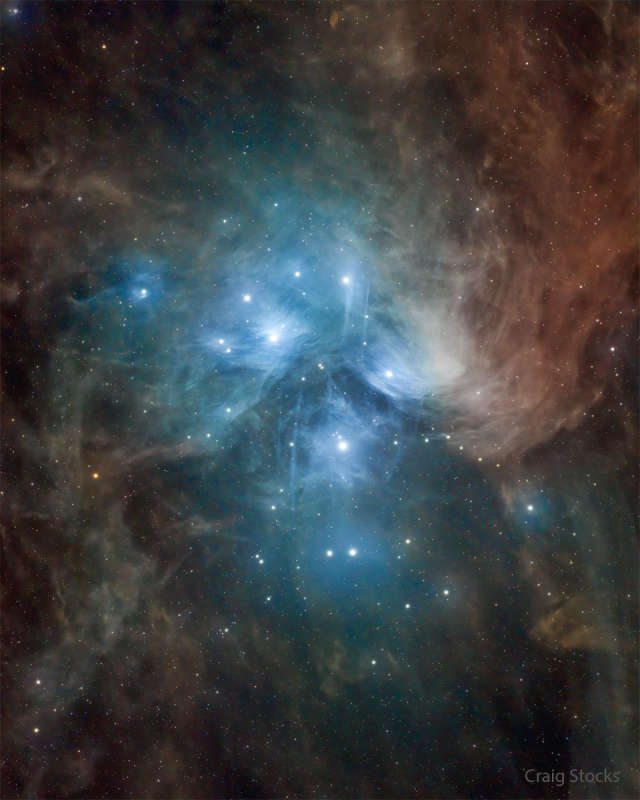
|
Credit & Copyright: Craig Stocks
Explanation:
The well-known Pleiades star cluster is slowly
destroying part of a passing cloud of gas and dust.
The Pleiades
is the brightest
open cluster of stars
on Earth's sky and
can be seen
from almost any northerly location with the
unaided eye.
Over the past 100,000 years, a field of gas and dust
is moving by chance right through the
Pleiades star cluster and is causing
a strong reaction between the
stars and dust.
The passing cloud might be part of the
Radcliffe wave, a
newly discovered
structure of gas and dust connecting several regions of
star formation in the
nearby part of our
Milky Way galaxy.
Pressure from the stars' light significantly repels
the dust in the surrounding blue
reflection nebula, with
smaller dust particles being repelled more strongly.
A short-term result is that parts of the dust cloud have become
filamentary and
stratified.
The featured deep image incorporates
nearly 9 hours of exposure and was captured from
Utah Desert Remote Observatory in
Utah,
USA, last year.
|
January February March April May June July August September October November December |
| ||||||||||||||||||||||||||||||||||||||||||||||||
NASA Web Site Statements, Warnings, and Disclaimers
NASA Official: Jay Norris. Specific rights apply.
A service of: LHEA at NASA / GSFC
& Michigan Tech. U.
Based on Astronomy Picture
Of the Day
Publications with keywords: pleiades - dust
Publications with words: pleiades - dust
See also:
- APOD: 2025 August 28 Á Galaxies, Stars, and Dust
- APOD: 2025 August 25 Á The Meteor and the Star Cluster
- APOD: 2025 July 8 Á The Pleiades in Red and Blue
- APOD: 2025 April 8 Á Moon Visits Sister Stars
- APOD: 2025 March 5 Á Seven Sisters versus California
- APOD: 2025 January 27 Á Pleiades over Half Dome
- Young Stars, Dark Nebulae
